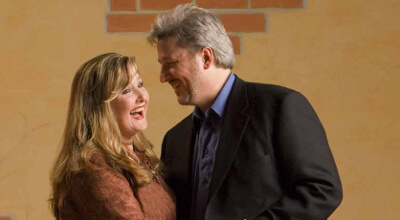More than 25 years ago, I married my wife three years after she had suffered a horrific car wreck. To date, that accident has cost her more than 70 operations (50 on my watch, so far), the amputation of both legs and nearly $9 million in medical bills.
Through this continuing ordeal, we have had countless hospital stays during birthdays, anniversaries and holidays, including Valentine’s Day.
Raising a family and keeping love alive in a marriage with a spouse who is constantly sick or in severe pain is an extreme challenge—one with many casualties. The divorce rate in couples with a disability in the family hovers around 90 percent, and relationships with a disability or chronic medical condition daily face significant pressures on the love holding the marriage together.
How do you keep love and passion thriving in a chronic medical catastrophe where the suffering is not limited to a short-term illness or injury? Different from Alzheimer’s or dementia, marriages impacted by one spouse living with a broken or diseased body while retaining complete cognitive awareness presents a different set of emotional trials for the marriage.
The challenge for the healthy spouse is to maneuver through the minefield of medical issues, attending to each of them but never losing sight of the suffering person’s heart. The challenge for the sick or injured spouse, even from a wheelchair or while in severe chronic pain, is to honor matters of the heart—particularly in the marriage.
Everyone hurts at some point; even supermodels and professional athletes suffer physically at times. Using sickness or feeling bad as an excuse to disconnect from the needs of close relationships sets a horrible and destructive precedent that seems to say, “I can be focused only on me whenever I feel bad.”
It is appropriate to acknowledge our hurts, but after more than a quarter-century of living with someone who daily suffers from severe chronic pain, I have witnessed the difference between “living with pain” versus “living while in pain.”
As Christ hung on the cross in excruciating pain; (the word excruciating is a Roman word invented to describe the horrific pain of crucifixion), He acknowledged His own agony, but never wavered from the relationship between Himself and His Father, His mother, the thief dying next to Him—and even those who crucified Him. He lived while in pain.
To love someone is to live—even while burdened with extreme agony and challenges.
Experience teaches me that life-changing and transcending love abounds when we choose to turn our eyes to others—particularly (and peculiarly) while carrying great burdens ourselves. We cannot escape the relentless difficulties in this life; we do however, have the opportunity to embrace each other, even while in pain, and discover that love and romance are not dependent on external circumstances, but instead reside solely in the heart.
As the wonderful Rodgers and Hart song stated so well: “My romance doesn’t have to have a moon in the sky/ My romance doesn’t need a blue lagoon standing by/ No month of May, no twinkling stars/ No hide away, no soft guitars.
“My romance doesn’t need a castle rising in Spain/ Nor a dance to a constantly surprising refrain/ Wide awake, I can make my most fantastic dreams come true/ My romance doesn’t need a thing but you.”
For caregivers on Valentine’s Day, if the love of your life struggles with chronic disease or injury, take a moment to see beyond the broken body and pain-filled eyes, and connect to the heart of the extraordinary person who captured your heart. And for those suffering, look deeply into the eyes of the weary soul who looks after you, quietly hold hands together, and bask in the love you both share—a love that is defying the odds.
Peter W. Rosenberger is the president of Standing With Hope, the nonprofit prosthetic limb outreach he and his wife, Gracie, founded in 2002. With a lengthy history of speaking and media interviews including People magazine, The Today Show, CNN and the Associated Press, Peter is also the author of numerous articles and served as the writer for his wife’s book, Gracie-Standing With Hope (Liberty University Press). Peter is currently working on his next book, in which he offers encouragement and practical help to caregivers of chronically ill individuals.














































